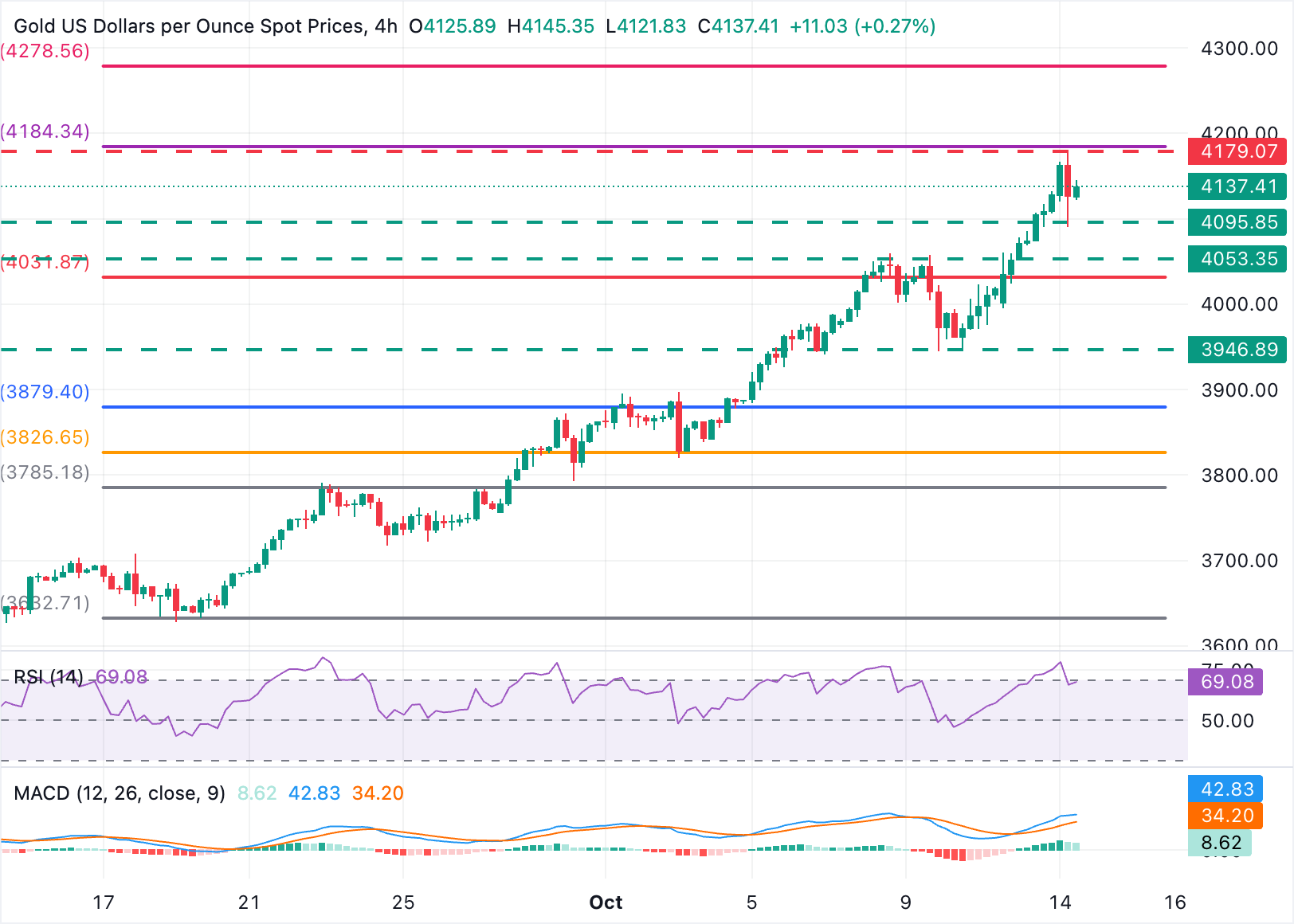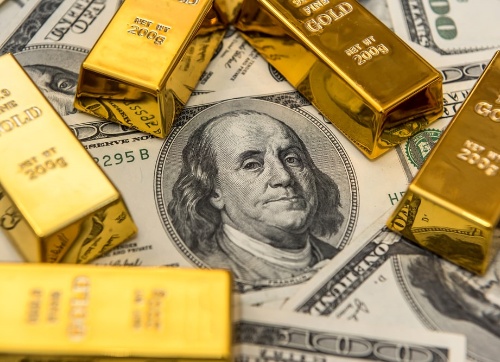Gold Price Forecast: XAU/USD remains supported above $4,100 in risk aversion

- Gold holds gains above $4,100 on risk-averse markets.
- New tensions on shipping fees between the US and China have revived concerns about a trade war.
- Technically, XAU/USD maintains its bullish trend intact, with the $4,200 level on focus.
Gold’s reversal from all-time highs near $4,180 found support at $4,090 earlier on Tuesday. The precious metal trimmed losses in risk-off markets amid simmering tensions between the US and China, returning to the $4,125 area during the European trading session.
News that the US and China were rolling out new fees for cargo vessels entering their ports has shattered expectations of a de-escalation of the trade rift between the world’s two major economies, and provided fresh demand to traditional safe-havens like Gold.
Technical Analysis: In a bullish trend towards $4,200

The 4-hour chart shows the RSI coming down from oversold levels, although, in the current fundamental context, downside attempts are likely to remain limited.
Bears have been contained at $4,090 (intraday low) on Tuesday. Further down, the previous all-time high, at $4.050 area (October 8, 9 highs is likely to challenge bears ahead of the $4,000 psychological level, and the October 7 and 10 lows, at the $3,940 area.
To the upside, the intraday high at $4,080 is the closest resistance, although the $4,200 round level might attract bulls. Beyond here, a Fibonacci extension tool shows the 461.8% extension of the mid-September rally, at $4,278.
Gold FAQs
Gold has played a key role in human’s history as it has been widely used as a store of value and medium of exchange. Currently, apart from its shine and usage for jewelry, the precious metal is widely seen as a safe-haven asset, meaning that it is considered a good investment during turbulent times. Gold is also widely seen as a hedge against inflation and against depreciating currencies as it doesn’t rely on any specific issuer or government.
Central banks are the biggest Gold holders. In their aim to support their currencies in turbulent times, central banks tend to diversify their reserves and buy Gold to improve the perceived strength of the economy and the currency. High Gold reserves can be a source of trust for a country’s solvency. Central banks added 1,136 tonnes of Gold worth around $70 billion to their reserves in 2022, according to data from the World Gold Council. This is the highest yearly purchase since records began. Central banks from emerging economies such as China, India and Turkey are quickly increasing their Gold reserves.
Gold has an inverse correlation with the US Dollar and US Treasuries, which are both major reserve and safe-haven assets. When the Dollar depreciates, Gold tends to rise, enabling investors and central banks to diversify their assets in turbulent times. Gold is also inversely correlated with risk assets. A rally in the stock market tends to weaken Gold price, while sell-offs in riskier markets tend to favor the precious metal.
The price can move due to a wide range of factors. Geopolitical instability or fears of a deep recession can quickly make Gold price escalate due to its safe-haven status. As a yield-less asset, Gold tends to rise with lower interest rates, while higher cost of money usually weighs down on the yellow metal. Still, most moves depend on how the US Dollar (USD) behaves as the asset is priced in dollars (XAU/USD). A strong Dollar tends to keep the price of Gold controlled, whereas a weaker Dollar is likely to push Gold prices up.








